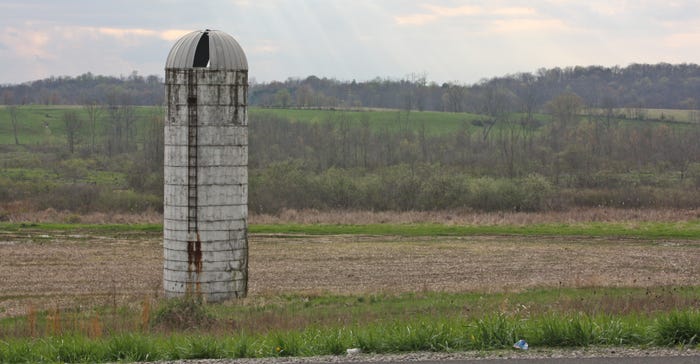December 2, 2019

In ancient times, the first silos were pits for the storage of grain. Over the last 130 years, silos were constructed in a vertical position. They came in all sizes and shapes and were made of various materials, making them beautiful and interesting. Today, many silos are seen along roadways and in fields standing alone.
A single landmark to a once-prosperous operation of family toil, agricultural productivity and innovation, silos often outlasted their companions – the barn.
In the late 1880s, silos began to appear in America on the family farm as a way to store silage for livestock feed. Silos tell the story of experimentation, progress and vast changes in the world of agriculture.
Early silos were constructed and lined with different kinds of wood, lath and plaster, stone and grout, brick with cement facing, metal or tar paper. Wooden silos, either round or square, could be found outside or in the barn’s interior.
In the early years, air leaks were a common problem, causing spoilage. Cypress staves eventually became the choice for wooden silos, although they, too, were short-lived and showed extreme damage from rot after a few years.
All the other methods of the time also proved no avail, as they were easily damaged from silage forks and chemical reactions. It became apparent that the interior sides of the silo needed to be smooth to allow the silage to slide down as it settled.
The other big problem was the acid in the silage, as it attacked whatever lining was used at the time. Tile silos worked well when the joints were tightly sealed. Sheet metal was tried, but was not considered successful.
Stopping spoilage
The first attempt to stop spoilage at the top of the silo was to cover it with paper or straw, and weigh it down with stones. This, along with a systematic feeding from the top, was necessary to control spoilage. Now it is known that the diameter of the silo should be determined by the number of cattle to be fed, along with feeding approximately 1 foot of silage per day off the top. In this way, the oxidation that destroys the feeding value of silage can be prevented.
The next step in silo design was concrete stave and poured concrete. But a problem occurred when materials used in the concrete for the silo poisoned the silage, causing sickness or death to the cattle.
The famous blue Harvestore silo was the next big innovation to come along in the 1950s and ’60s. Being constructed of fiberglass, it had a smooth interior and was airtight, solving most of the problems that plagued early farmers.
Drive down the road now, and you will find we have come full circle: Pit silos are once again in use. Huge trenches are lined with concrete or plastic, and covered and sealed with large plastic sheets. Plastic bag silos are long tubes that are filled, sealed and stored aboveground. And so it goes in the agricultural world.
Gray, “the lady barn consultant," is scheduling barn talks for 2020. Contact her to reserve a date for your group or organization at [email protected] or 740-263-1369.
About the Author(s)
You May Also Like




